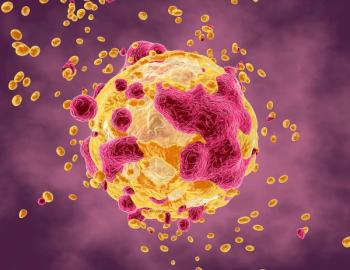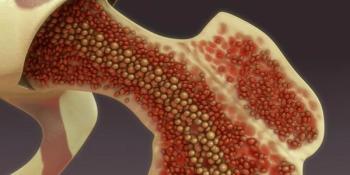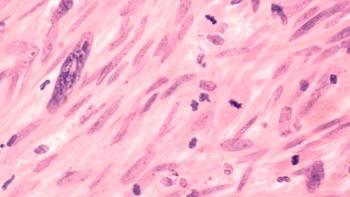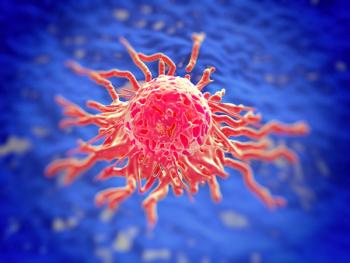
Dasatinib Offers Some Promise in Rare Sarcoma Subtypes
A trial of five rare sarcoma subtypes found that though dasatinib failed to achieve progression-free survival goals, more than half of patients with certain subtypes did have reasonably good survival outcomes.
A trial of five rare sarcoma subtypes found that though dasatinib failed to achieve a goal of 50% 6-month progression-free survival, more than half of patients with certain subtypes did have reasonably good survival outcomes. Based on these results, dasatinib should be studied in further trials in certain sarcoma subtypes.
“A number of distinct histologic subtypes of sarcoma share the unusual behavior of a low cell proliferation rate but a high risk of local recurrence and systemic spread,” wrote study authors led by Scott M. Schuetze, MD, PhD, of the University of Michigan in Ann Arbor. Alveolar soft-part sarcoma (ASPS), solitary fibrous tumor (SFT), epithelioid sarcoma (ES), chordoma, and low- to intermediate-grade chondrosarcoma (CS) share this feature, and also are largely resistant to chemotherapy.
The new study included 109 patients, 12 with ASPS, 33 with CS, 32 with chordoma, 7 with ES, and 25 with SFT; all were treated with dasatinib, and they were included in a single cohort due to the rarity of these types of cancer. The results were
The 6-month progression-free survival rate in the entire cohort was 48%, with a median progression-free survival of 5.8 months. The median overall survival was 21.6 months. Certain subtypes fared better than others with dasatinib: the 6-month progression-free survival rate was 62% with ASPS, 47% with CS, 54% with chordoma, 57% with ES, and 30% with SFT. At 5 years, 30% of ASPS patients remained alive, as did 18% of chordoma patients, 9% of CS patients, and 8% of SFT patients; none of the ES patients were alive at 5 years.
Treatment interruption was required in 62 patients (57%), and a dose reduction was required in 36 patients (33%). Those with SFT more frequently required a dose reduction (52%) than those with ES (14%) and ASPS (17%). Discontinuation was due to sarcoma progression in most patients.
Grade 3 and 4 adverse events occurred in 46 and 8 patients, respectively. The most common grade 3 events included pain (17%), dyspnea (11%), pleural effusion (6%), and diarrhea (5%). Six patients died during therapy; two of those were due to general progression of sarcoma, three were due to pulmonary complications of the disease, and one death was unrelated to either the malignancy or the treatment.
One ASPS patient, six CS patients, six chordoma patients, two ES patients, and five SFT patients had an objective tumor response with dasatinib based on the Choi criteria. Only one (a chordoma patient) had an objective response using RECIST criteria.
The authors highlighted the collaborative effort used here in order to accrue enough patients with these rare diseases for a meaningful trial. Though the progression-free survival rate fell short of goals, “more than 50% of patients with ASPS or ES were free of disease progression for more than 6 months, and 50% of the ASPS patients were alive for at least 2 years after enrollment,” they wrote. The various results of the study show that dasatinib is worthy of further study in several of these rare sarcoma subtypes, they concluded.
Newsletter
Stay up to date on recent advances in the multidisciplinary approach to cancer.

















































































